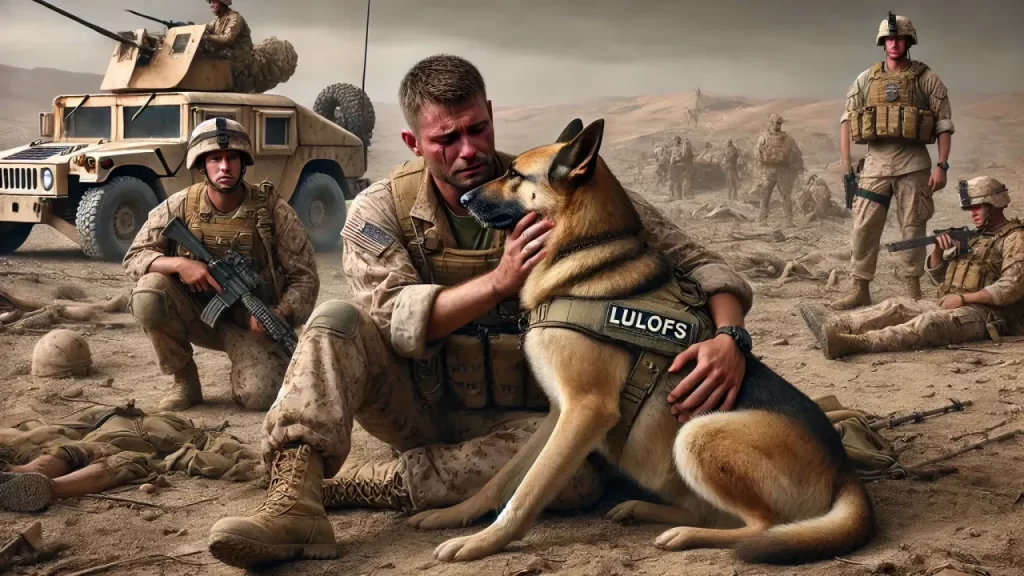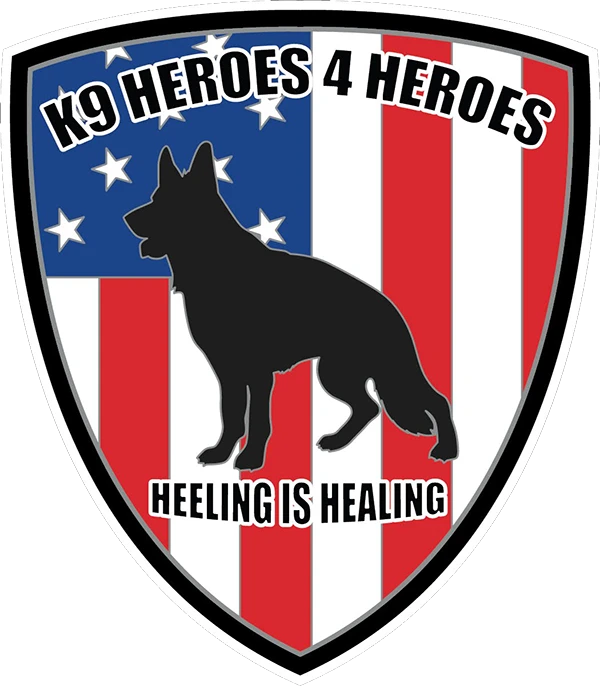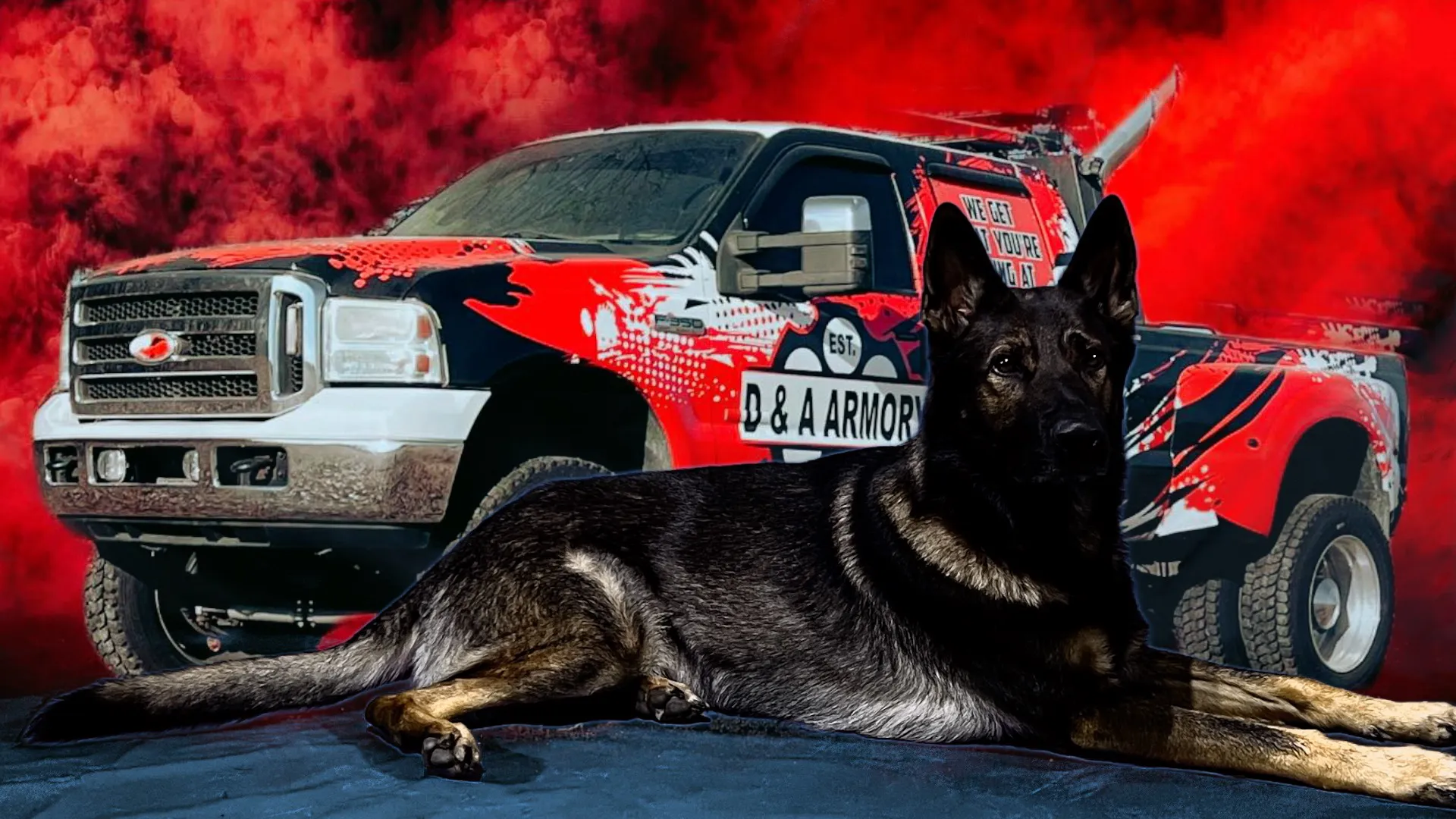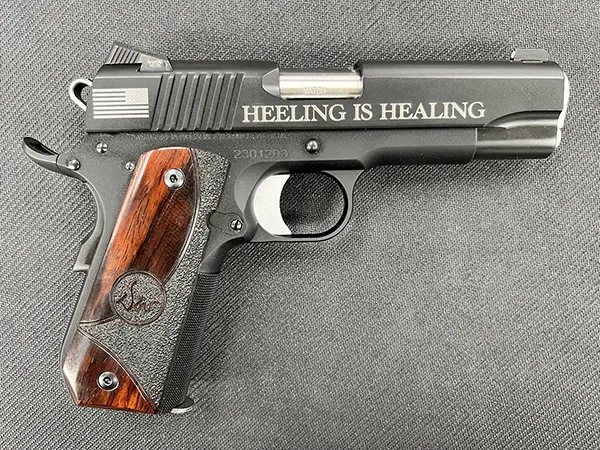
The rich history of military working dogs, tracing their evolution from their initial roles in the Civil War to their contributions to modern warfare. It also delves into the ethical considerations surrounding the treatment of these animals, particularly as they transition from military service to civilian life. Through the stories of specific dogs and their handlers, this paper aims to illustrate these animals’ impact on the battlefield and the lives of those who serve alongside them.
Military working dogs (MWDs) have been an indispensable part of the U.S. military from the Civil War to the present day, not only because of their tactical capabilities but also due to the deep emotional bonds they form with their handlers. These bonds, rooted in mutual trust and devotion, enhance the effectiveness of these teams in the field. However, the ethical treatment of MWDs, especially as they transition to civilian life, must align with the care given to human veterans, recognizing their service and addressing their psychological needs.
The history of military working dogs in the United States finds its beginnings in the turbulent era of the Civil War. Although the formal recognition and actual training of military working dogs were still decades off, the groundwork for their development was laid in the turmoil of the Civil War and has long since flourished.
During that period, dogs were not formally trained or deployed as military assets; soldiers brought them to the battlefront because of their special abilities and emotional support. Amidst the chaos and savagery of the Civil War, dogs found their natural place in traditional roles: protecting, guiding, and being companions. These animals brought soldiers a bit of normalcy amidst the chaos of war. But they did more than provide companionship. Dogs showed their usefulness in practical ways, such as running messages through the battlefield, acting as sentinels, and even helping care for the wounded.
One of the best-known incidents during this era comes from the experience of Jack, a mongrel dog attached to the 102nd Pennsylvania Infantry Regiment. He quickly became more than just a mascot; he was an important unit member. Jack’s presence on the battlefield was both a comfort and a symbol of the indestructible tie between soldiers and their dogs. He came to be identified with loyalty because he would face the thick of battle, going wherever his regiment went and, at times, helping locate and treat wounded soldiers. Jack’s nature was not born out of formal training but was the living embodiment of his loyalty and attachment to the men of his regiment (U.S. History Scene, “Full Measure of Devotion: Animals of the Civil War”).

Jack’s story is representative of the role dogs played during the Civil War: an organic development born out of necessity rather than deliberate design. Those early instances, though sporadic and unstructured in execution, were the first steps in recognizing the potential of dogs as more than mere companions in war. They were seeds from which the organized and formalized use of military working dogs in later conflicts would grow. The Civil War also highlighted the limitations and complexities of employing dogs in combat. Lacking any training or standardization, such usage was entirely at the whim of the individual soldiers working with the dogs. Perhaps some single dogs, like Jack, were destined to become mythical heroes based on their personal contributions, while many tens of thousands of others ended up underused or even sacrificed in some instances. Lessons learned from those early experiences further justified the need for a more systematic approach to integrating dogs into military operations. The early seeds, sown during the Civil War, took root with the understanding that dogs could be more than mere mascots or companions. They could actively participate in the war effort, playing roles integral to military success. The long road ahead was full of these roles being improved and adapted, eventually leading to the sophisticated military working dog programs that we see today. The progression from the ad hoc use of dogs in the Civil War to their formalized roles in modern conflicts epitomizes the timelessness of the bond between humans and dogs and speaks to an appreciation of their invaluable military contribution.
The actual formalization of programs using military working dogs began during World War II. This marked the first official induction of dogs into the United States military, seeing potential in them beyond mere companionship. Over 10,000 dogs were trained and deployed in different operations during the war, with some working as messengers and detection dogs. Civilians often volunteered these dogs, indicating a strong sense of patriotism and faith in the abilities of these animals (Cruse, “Military Working Dogs: Classification and Treatment in the U.S. Armed Forces”).
The Dogs for Defense program was established in 1942. The animals were not called support troops but integral to military operations. Their sharp senses, particularly their sniffing capabilities, became vital as they detected mines, enemy soldiers, and other hidden perils. If these dogs performed excellently during World War II, then the credit can be attributed to the foundation laid for their later use in subsequent wars.
It is essential to mention the Vietnam War when discussing the history of military working dogs. The dogs were essential when patrolling the bushes, detecting booby traps, and thus preventing tragedies, consequently saving many lives. However, their service was often marked by tragedy, especially in the treatment they received post-war. Of the nearly 5,000 dogs deployed to Vietnam, only several hundred returned home to the United States. Many were euthanized or left behind due to bureaucratic decisions, a fate that has haunted many handlers to this day (Frankel, War Dogs).
One such handler was Ron Aiello, who fought in Vietnam with his dog, Stormy. This story illustrates the depth of the bond that can form between a handler and a dog in the heat of battle. Stormy was more than a tool to detect enemy soldiers; she was Aiello’s lifeline. Their bond was so deep that Aiello attributes his physical and emotional survival to Stormy. It remains hard for him, even now, so many years later, to stomach having to leave her when his tour ended in 1967. It speaks to a more considerable concern about the treatment of working dogs after their military service. This issue has improved somewhat over the years, as Frankel relates in War Dogs.
The role of military working dogs became increasingly important in the post-9/11 landscape, particularly in the context of the Iraq and Afghanistan wars. These dogs are essential in sniffing out improvised explosive devices (IEDs), which have become the signature weapon of these wars. Despite all the technology available today, nothing can duplicate a dog’s ability to detect hidden dangers. The K9 evolved during these battles. It should also be noted that our ability to understand their tactical and emotional capabilities was only now coming to light in our shared evolution. One such snippet from the book War Dogs details an event: “After one very bad day, Lulofs and Aaslan were waiting with the Marines to remount so they could get back to their base. Lulofs watched while one Marine broke down, put his head on Aaslan’s shoulder, and wept.” This was not a story. It was one event of many where people witnessed horrible death and dismemberment, and only a dog knew how to provide comfort.
The story of Technical Sergeant Justin Kitts and his military working dog, Dyngo, is a profound tribute to the relationship that exists between a handler and his dog, especially in the crucible of war. Dyngo was not only a partner to Kitts but also almost a lifeline, a source of unwavering trust and companionship in the direst situations. Their relationship was forged in the furnace of battle, where survival was a daily concern, and every mission bore the gravitas of life and death. Dyngo’s highly trained sense of smell was crucial in detecting IEDs, the signature weapon of insurgents in Afghanistan. These hidden, hastily-made explosives were responsible for countless casualties, and the ability to detect them before they could wreak havoc was an immeasurably valuable skill. Dyngo was saving lives. Each IED he found and alerted to meant that a group of soldiers could return home safely, another convoy could pass through unscathed, and yet another mission would end without the tragedy of loss of life.

This bond of trust developed through hours of training and was riveted together by the shared crucible of war. Dyngo never hesitated to put himself in harm’s way to protect the soldiers, including Kitts. And this trust was reciprocated. Kitts would have done anything to protect Dyngo. In the chaos of battle, where uncertainty was the only certainty, their relationship was a beacon of reliability. Dyngo became more than just a dog; he was a brother-in-arms, a guardian, and a confidant. Yet the end of their deployment didn’t mark the end of their struggles. While in the field, Dyngo had been an unstoppable force, detecting IEDs and saving lives at every turn.
However, Dyngo’s move to civilian life presented another kind of battle. Like many military working dogs, Dyngo found that leaving such intensity and moving to civilian life, which was far too quiet, was jarring and disorienting. Gradually, the dog, who had always shown such focus, resolve, and drive in his work, began to display signs of PTSD. This condition is not specific only to human soldiers but can also affect animals. Dyngo’s symptoms included restlessness, irritability, anxiety, and hypervigilance. The sights and sounds of civilian life, so different from the Afghan battlefields, triggered Dyngo to relive the war in a way that he could not easily shake. Once disciplined and focused, Dyngo started to display behaviors that were not just destructive but heart-wrenching. These were symptoms of a mind struggling to make sense of a world no longer set to rights. The transition was not just difficult; it was painful to witness, especially for Kitts, who had depended on Dyngo’s soundness and bravery during his time in the field. Kitts had his frustrations in life after the war. The relationship between the two proved indispensable to Kitts while on duty, and watching his able and trusted companion go through a hard time was a source of intense emotional pain. The man who had once relied on Dyngo for survival now assumed the role of caretaker, trying to soothe the scars of war that had marked his dog as deeply as they had marked him. This reversal of roles was one that Kitts embraced with the same dedication and love he showed in the field.
Dyngo’s story is a powerful reminder that the effects of war are not confined to the battlefield. Soldiers carry the emotional wounds of battle far beyond the end of the conflict, as do the dogs who fought beside them. Dyngo’s story serves as an ideal example of how PTSD can affect military working dogs during post-service life. These animals should be treated with the same degree of care and respect that any human veteran would receive, as they have given so much in the service of their country. The challenges during the transition from war to civilian life for military working dogs like Dyngo are significant. The experiences of war can cause stress and trauma that leave deep mental scars. Without the right support and care, these animals can suffer greatly. The bond between a handler and his dog doesn’t die with the time they spend together. Kitts’ devotion to Dyngo, even while they both fought their own personal post-war demons, was an example of just how unbreakable those bonds became. Dyngo left behind a legacy not only for saving lives on the battlefield but for teaching us that love, loyalty, and deep emotional bonds can be forged between a dog and his handler. It is a bittersweet reminder that the duty and devotion of a military working dog go far beyond the battlefield. They need our support, care, and love to navigate the challenges life brings after the war.
MWDs have always been companions to soldiers, offering comfort and boosting morale in harsh environments. This cannot be overemphasized, as the psychological support these dogs provide to their partners is sometimes more critical than their physical capabilities. K9 Aaslan was not merely a tool for detecting IEDs but also an emotional anchor for Staff Sergeant Sean Lulofs amidst the chaos in Iraq. Such a bond was so strong that Lulofs, much like his dog, had trouble acclimating to civilian life upon his return from Iraq. This emphasizes the codependence of dogs and handlers and the need for comprehensive support systems that encourage psychological health (Frankel, War Dogs). The mental scarring of combat runs high for working dogs, and they have much in common with their human handlers regarding experience. Both dogs and handlers can develop symptoms of PTSD, such as anxiety, hypervigilance, and sometimes aggression. If left untreated, these symptoms can destroy the quality of life for both the handler and the dog. A bond between a handler and his dog is forged in the crucible of battle, where everything depends on trust and reliance on each other. That bond of strength can become a bond of mutual trauma.
The stories of Dyngo, Aaslan, and others like them highlight the need for a comprehensive support system that heals the psychological wounds of both the handler and the dog. Much-deserved attention should be given to the humane treatment of military working dogs, especially as they transition from military service to retirement. Indeed, the public outcry after the Afghanistan withdrawal, in which so many MWDs were left behind, shed much-needed light on the pressing need for policies that ensure these animals are treated with dignity and respect. After all, these dogs are not just tools of war; they are living beings who have served side by side with soldiers in some of the most demanding environments. They deserve the same care and consideration given to their human counterparts. Military working dogs are a history of personal bonds between the animals and their handlers. Made in the cauldron of combat, these bonds are founded on mutual trust, loyalty, and love. They are bonds that often outlast the sound of guns, still shaping the lives of handlers and dogs. As we look to the future, it is important to remember these animals and ensure their dignity and respectful treatment. This support should include full-service medical care for the dogs and their handlers as they transition to civilian life. The stories of Dyngo, Jack, Taint, and so many other military working dogs remind us that these are not just tools of war; they are our best friends, our guardians, and, in many cases, our saviors.
Over time, studies on K9 detection have increased. The discipline, intelligence, and sensory capabilities of these dogs make them ideal candidates for transitioning into roles as service animals for blind people, individuals with special needs, kids with autism, and people prone to seizures who emit certain odors when they are about to experience an episode. The ability of the K9 has made them invaluable companions in these new roles, enhancing the quality of life for many individuals.

In addition, medical research, particularly in the early detection of diseases such as cancer, has demonstrated that dogs can be trained to detect the specific volatile organic compounds associated with various cancers in breath, urine, and blood samples, providing a non-invasive method of early diagnosis. One significant study by Horvath et al. (2013) found that dogs could accurately identify cancer in breath samples, highlighting the potential of these animals in medical diagnostics. This research has opened the door to further exploration of canine olfaction in detecting other diseases, including diabetes, Parkinson’s, and infectious diseases.
Citing from a personal training event, told a story by Major Kaplan, who served as a physician in charge of a medical unit during the Vietnam War. Major Kaplan recounted an experience where he encountered a soldier who had been severely wounded in battle, both physically and mentally. Although the soldier was no longer in critical physical danger, he had become unresponsive and refused to speak, eat, or react in any normal way. Upon reviewing the soldier’s file, Major Kaplan discovered that the soldier had been a K9 handler and that his dog had died during the battle.
Major Kaplan obtained a dog from another unit and prepared to bring the dog into the tent. As he was about to enter, the base Colonel began yelling that dogs were not allowed in the patient area. However, Major Kaplan, asserting his authority as the physician in charge, insisted that he could override the Colonel’s orders for the health and well-being of the injured soldiers. He proceeded to place the dog on the bed of the wounded soldier. While there was no dramatic reaction like one might see in a movie, Major Kaplan described how the patient began to cry.
Converse to the advancement of dogs to enhance our military capabilities, we must use our technological advancements to ensure these brave animals receive the complete treatment necessary for their survival. Professor Efrati has pioneered the use of hyperbaric oxygen therapy to treat blast wounds in soldiers, and now, an Israeli special forces dog named Mikey has become the first in the world to undergo this treatment.

Mikey was just weeks away from retirement when she was severely injured by a terrorist attack in battle in 2023, suffering catastrophic injuries to her face, body, and legs. The explosives K9 from the elite Oketz canine unit was sent to a premier medical facility. Although Dr. Efrati was initially hesitant, his hyperbaric oxygen treatment yielded remarkable results. While Mikey will never return to duty, she is alive and happy. I have never seen a more beautiful dog.
Reading, researching, and understanding the profound history and evolving role of military working dogs, it is clear these animals have left an indelible mark on both the battlefield and the hearts of those who serve alongside them. From the earliest days of the Civil War to the complex operations of modern warfare, military working dogs have proven themselves to be more than just tools of war. They are trusted partners, protectors, and companions. My experience with Rrandy underscores the deep bond between a handler and dog, built on mutual trust, respect, and an unspoken understanding that truly does transcend words. As we continue to honor the service of military working dogs, it is imperative that we also address the ethical considerations surrounding their care, particularly as they transition from military service to civilian life. Like their human counterparts, these animals deserve to be treated with the utmost dignity and respect, recognizing their invaluable contributions and ensuring they receive the care they need. Their real stories and countless others remind us that the impact of military working dogs extends far beyond the battlefield, touching the lives of those they serve and leaving a legacy of loyalty, courage, and (in my humble opinion) love.
Citations:
Cruse, Sarah D. “Military Working Dogs: Classification and Treatment in the U.S. Armed Forces.” Animal Legal & Historical Center. Accessed June 20, 2024. https://www.animallaw.info/article/military-working-dogs-classification-and-treatment-us-armed-forces.
Frankel, Rebecca. War Dogs: Tales of Canine Heroism, History, and Love. New York: St. Martin’s Press, 2014.
United States Army. “Military Working Dogs: Guardians of the Night.” The United States Army. Accessed June 20, 2024. https://www.army.mil/article/56965/military_working_dogs_guardians_of_the_night.
U.S. History Scene. “Full Measure of Devotion: Animals of the Civil War.” Accessed June 20, 2024. https://ushistoryscene.com/article/animals-civil-war/.
Frankel, Rebecca. “The Story of Dyngo, a War Dog Brought Home From Combat.” National Geographic. Accessed July 10, 2024. https://www.nationalgeographic.com/animals/article/the-story-of-dyngo-a-war-dog-brought-home-from-combat.
Horvath, G., G. A. Järverud, S. Järverud, and I. Horváth. “Human Ovarian Carcinomas Detected by Specific Odor.” Integrative Cancer Therapies 12, no. 1 (2013): 53-59. https://doi.org/10.1177/1534735412446074
United States Department of Defense
U.S. Department of Veterans Affairs
Original post by S. Adam Gordon
Legal Analyst: FMR. DHS ~ 𝐅𝐚𝐯𝐨𝐫𝐢𝐭𝐞 𝐐𝐮𝐨𝐭𝐞:”Honorable alike in what we give, and what we preserve. We shall nobly save, or meanly lose, the last best hope of earth” – 𝐀𝐛𝐫𝐚𝐡𝐚𝐦 𝐋𝐢𝐧𝐜𝐨𝐥𝐧 𝟏𝟖𝟔𝟐


